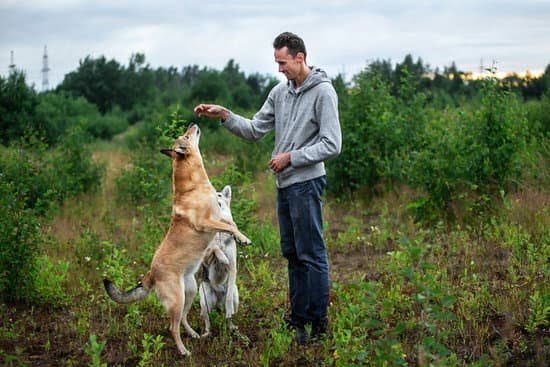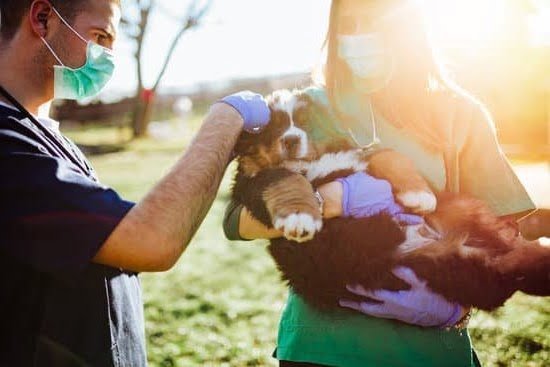Introduction
Crate training can be an effective and useful way for dogs to learn how to behave in the home, as well as providing a safe place for them to sleep and relax when necessary. This training is quite successful with puppies and young dogs that are still in the process of learning boundaries, but it can also be done with older dogs as well. However, crate training an older dog such as a 2 year old carries some additional challenges compared to teaching puppies.
To begin, it’s important to note that much of the behavior exhibited by a 2 year-old canine will be driven by instinctive behaviors such as guarding territory or chasing small animals. These instincts may interfere with crate training if the dog does not understand why they are being placed in a little box inside the home. Additionally, a more mature dog might not take direction very well in comparison to a puppy, who is still learning his place in the world and is easily molded into obedience. In addition, adult dogs may have issues with being separated from their owners due to emotional attachment problems or anxiety issues that need to be addressed. It’s also worth mentioning that older dogs have formed certain behaviors at this point which need breaking before beginning crate training.
The Pros and Cons of Trying to Crate Train a 2 Year Old Dog
The pros of trying to crate train a 2 year old dog are that with patience and consistency you can achieve success. This will benefit you and your dog in the long run, as having him trained to use his crate when needed can be helpful in certain situations. Having a dog habits association with his crate (i.e. it being associated as a safe and relaxing space) can minimize stress for both the owner and their pet.
The cons of trying to crate train a 2 year old dog are that it may take more effort compared to younger dogs due to them having potentially learned bad behavior over the course of their life so far that could be challenging to change. Furthermore, if the dog has an underlying fear of enclosed spaces or separation anxiety issues, training could further exacerbate this problem rather than alleviating it thus making crate training less successful in these situations.
Preparing Yourself, Your Home, and Your Dog for Crate Training
Crate training a two-year-old dog can be an effective and rewarding experience for the owner and the dog, but it will require patience and consistency. Before beginning crate training, you should make sure your home is prepped for the process. This may include setting up barriers to prevent the dog from having difficulty getting in and out of its crate, or having certain areas of your home off limits for the duration of crate training. Additionally, you should provide comfort items like a toy or blanket inside the crate to help your dog settle in during crating.
You’ll also need to prepare yourself mentally by setting an appropriate expectation of your dog’s behavior during training. Depending on your pup’s individual personality and past experiences with crating, they may take more time adjusting than others. Make sure to reward successes and give plenty of praise throughout this process as these reinforcements make learning easier on dogs.
Finally, consider consulting with a professional trainer if you are feeling unsure about any part of this process or have any questions; they can provide additional guidance while providing insight into specific tips that could be relevant to your unique circumstances. With these preparations made ahead of time, you can ensure that crate training is successful not just for your two year old pup but for you as well!
Strategies for Crate Training Your 2 Year Old Dog
Crate training your 2 year old dog can be a beneficial way to help keep your pet safe and create a cozy environment for them. It can help establish the rules of their new home, which will help ensure that everyone in the house feels comfortable. Here are some tips for crate training your 2 year old dog:
1) Make sure you select the right size of crate for your pup – if it’s too small, they won’t feel secure. The crate should be just big enough for them to comfortably turn around and lie down without bumping into the sides or top.
2) Make sure to introduce your pet to the crate gradually – begin with short periods of time at a time and slowly build up over time as they become more comfortable in their surroundings. Soft music or white noise can also be helpful here.
3) Put something special inside – like a toy or treat – so that they come to associate it with positive feelings and rewards while they’re in there.
4) Never force your pup into the crate – make sure he goes in willingly and freely by slowly luring him inside with tempting treats and rewards every time he succeeds at going in on his own.
5) Take regular breaks outside of the crate during training sessions so that your pup knows that it’s not all about being cooped up all day long. Let them explore and engage with their new environment whenever possible throughout the day!
Dealing with Common Challenges of Crate Training a 2 Year Old Dog
Crate training an older dog comes with a new set of challenges that don’t exist when crate training a puppy. The key to success with crate training an older dog is patience, consistency and paying attention to the cues the dog gives you. It is important to give your two-year-old pup plenty of time to fall in love with the crate and learn to feel safe and relaxed when inside it. Here are some tips for crate training a 2 year old:
• First, start off slow by introducing your pup to the crate gently and slowly. Give them treats near or in the crate so that they aren’t intimidated by it and make this process as positive as possible.
• Create a comfortable atmosphere around the crate so that they find it inviting. This could be done through adding covered blankets as well as providing comfy bedding that they can dream away while in their cage.
• Include toys in their time inside the crate. This will make them view their time there as fun instead of something negative – hence teaching your pup not just to tolerate crate time but to enjoy it too!
• Keep sessions short at first until your pup acclimates to being confined before gradually increasing the length of time they spend inside once they become accustomed to being there.
• Reward good behaviour whenever you see them relaxing or going into their crates by themselves, even if it isn’t for long periods at first. This way, you’re conditioning them positively towards spending more quality time in there eventually!
Wrapping Up
Yes, you can crate train a 2 year old dog. Depending on your pup’s history of training and exposure to being crated, it may take some additional time and effort to achieve the desired goal. However, with patience and consistency, you can successfully train your pup to be comfortable in a crate. Start by introducing the crate to them in a positive manner—make it an area filled with treats, comfortable bedding, and toys that they can enjoy while in the cage. As they become more familiarized with the crate, gradually increase their crate time from short periods (10-15 minutes) up to longer stays (1-2 hours). If possible enforce short breaks for potty or exercise during these crate times so your pup will be both mentally and physically ready for longer periods. As their confidence in the cage grows, reward this behavior — praise, treats or extra playtime are terrific motivators! By regularly reinforcing positive associations with the crate, you’ll eventually reach successful crate training for your 2 year old pup – making it a happy place for all involved!

Welcome to the blog! I am a professional dog trainer and have been working with dogs for many years. In this blog, I will be discussing various topics related to dog training, including tips, tricks, and advice. I hope you find this information helpful and informative. Thanks for reading!





